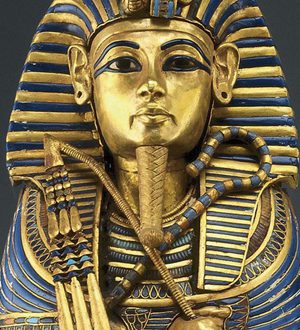 Women invented metallurgy! This extraordinary revelation was made in a lecture last night at New York University’s Institute for the Study of the Ancient World (which has an unfortune acronym pronounced eyesore) by David Anthony, Professor of Anthropology at Hartwick College and Guest Curator of the exhibition currently on view at ISAW until April 25, 2010: “The Lost World of Old Europe: The Danube Valley, 5000-3500 BC.”
Women invented metallurgy! This extraordinary revelation was made in a lecture last night at New York University’s Institute for the Study of the Ancient World (which has an unfortune acronym pronounced eyesore) by David Anthony, Professor of Anthropology at Hartwick College and Guest Curator of the exhibition currently on view at ISAW until April 25, 2010: “The Lost World of Old Europe: The Danube Valley, 5000-3500 BC.”
In his talk, entitled “The Rise and Fall of Old Europe,” Anthony delved into the mysteries of the highly sophisticated and populous culture that sprang up 7,000 years ago along the banks of the Danube in Southeastern Europe, in what is now Bulgaria, Romania, and Moldova, artefacts from which are on display at the exhibition. This discovery, which was really only made in the middle of the last century, set the historical and archaeological world on its heels, because it turns out the Europeans were conducting a highly sophisticated lifestyle before even the Ancient Egyptians got going. “If an alien landed on earth in 5,000 BC, he’d probably have chosen Europe over Mesopotamia,” said Anthony.
I’ll be writing about the exhibition and its implications at greater length next week, but I wanted first to share with you how exciting it was to hear that this Old European culture was one that, apparently, substantially empowered women, and included a great deal of goddess worship. Archaeologists allowed in since the fall of the Iron Curtain have dug up thousands of big-hipped, busty female figurines.
And then there’s the female contribution to, like, actually starting the Copper Age. Basically, Anthony explained, the elaborately beautiful pottery archaeologists have found in the Old Europe sites were mostly for domestic use, not trade. That means they would have been made predominantly by women, since, historically, it is the female hand that tends to craft vessels meant for the home in the Ancient World. Messing around with stuff that might have good pigment in it would have lead them to put ground up blue- and green-flecked stone in their kilns. Lo and behold, they ended up smelting copper, which would have puddled in the bottom of the ovens.
They must have asked: “What’s this?” They started turning up the heat and casting it into axe heads and jewellry. And so began the Copper Age. Then they started melting down shed-loads of gold, some of which ended up being the Varna Gold. “We think of metal work as being done by some big, sweaty, hairy male smithy,” said Anthony. “It turns out it wasn’t the case here.”
I’m truly surprised.
More next week.




